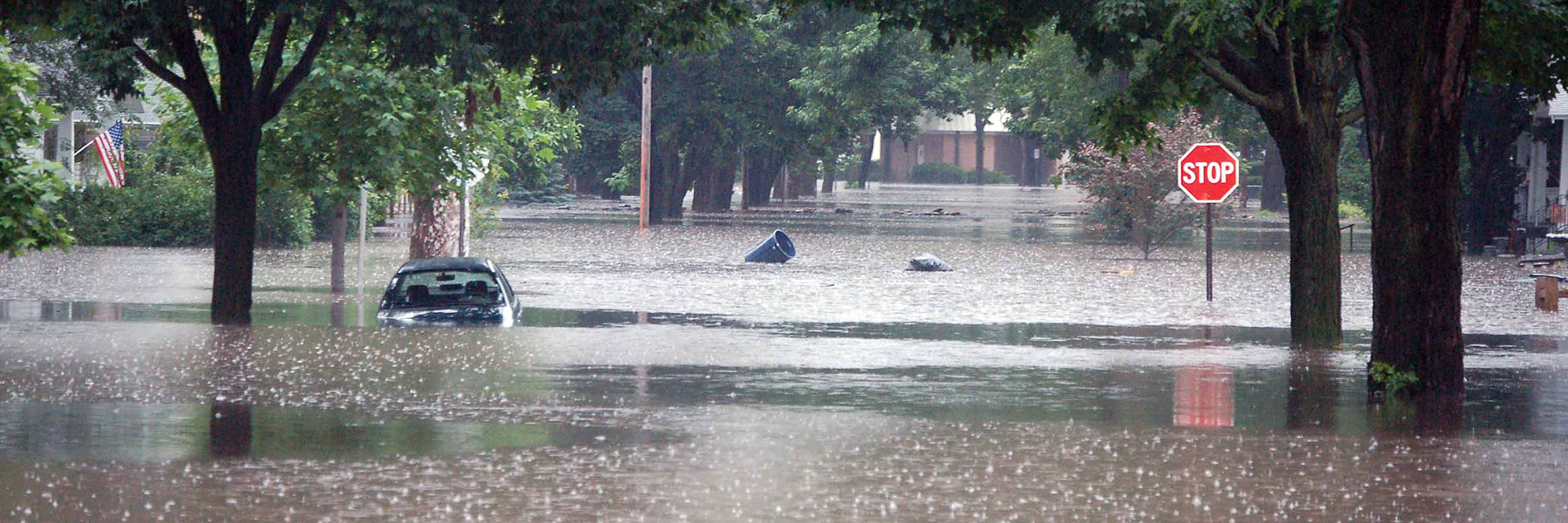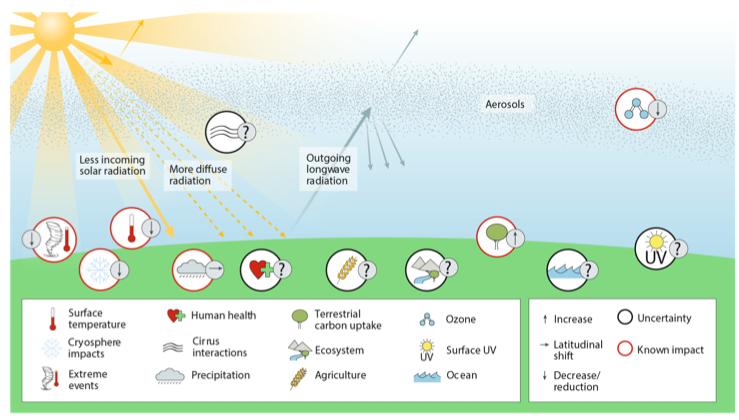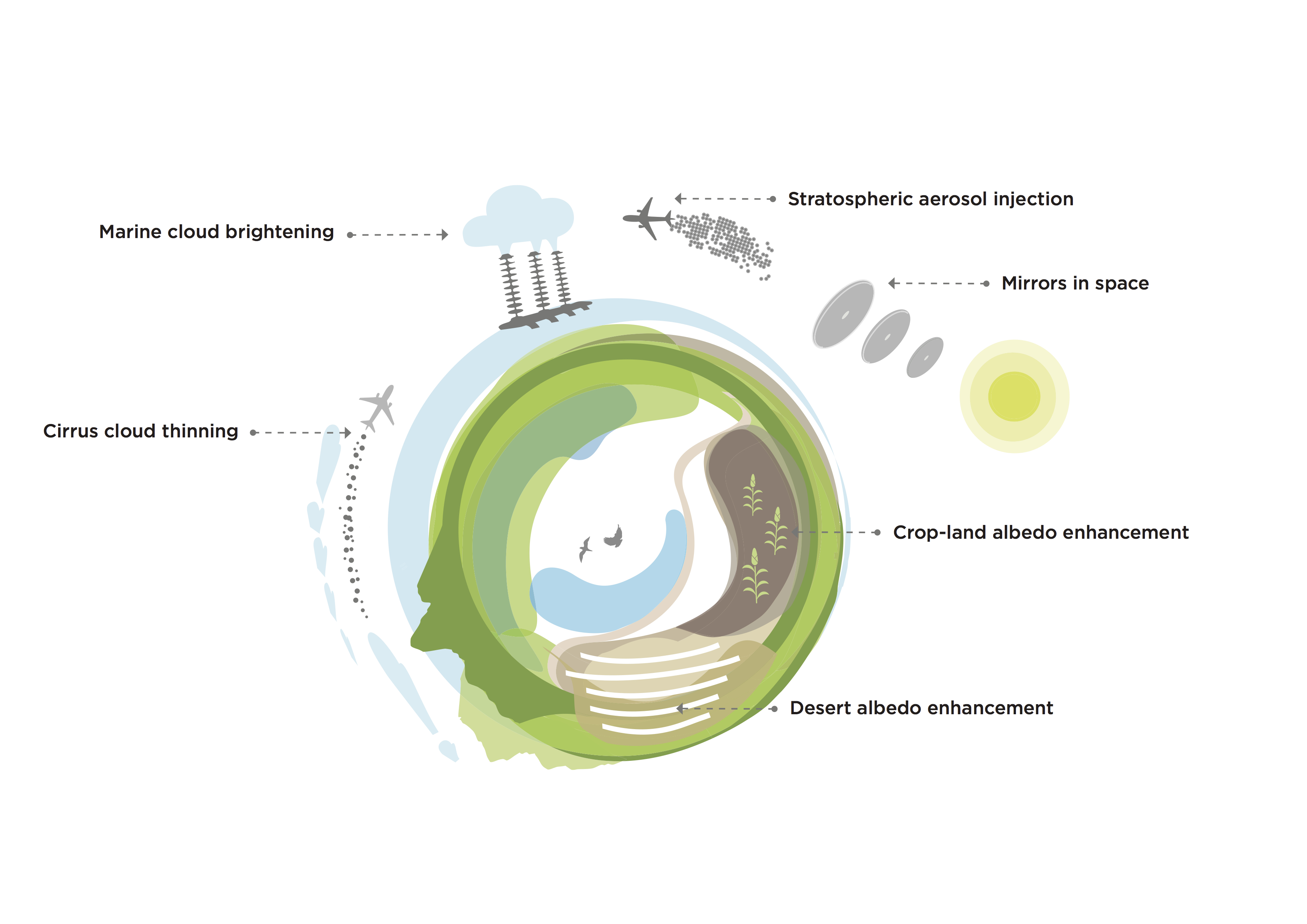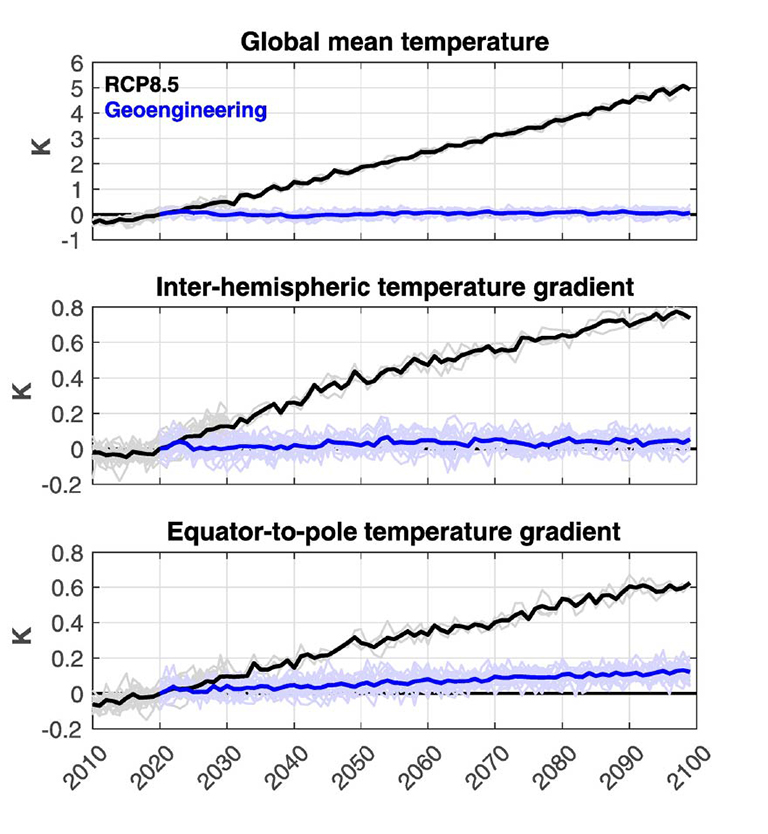Geoengineering
Figure caption: Some of the effects of stratospheric sulfate aerosol geoengineering. From Kravitz and MacMartin (2020). https://www.nature.com/articles/s43017-019-0004-7
Geoengineering describes a set of technologies designed to temporarily, deliberately modify the climate, buying time for society to ramp up greenhouse gas mitigation and carbon dioxide removal efforts. Some of the most commonly discussed technologies include:
Stratospheric sulfate aerosols. Large volcanic eruptions inject, among many things, sulfur into the atmosphere. This sulfur forms highly reflective microscopic droplets (aerosols) that reflect a portion of sunlight back to space, cooling the planet for 1-3 years. If stratospheric injections could be sustained, the planet could stay cooler.
Marine cloud brightening. The ocean is very dark and absorbs a lot of energy from the sun. Thick blankets of low clouds can be very bright, and when they are over the ocean, much of that solar energy that would have been absorbed by the ocean is instead reflected upward. Under the right conditions, if certain aerosols (like sea salt) are injected into those marine low clouds, the clouds can become brighter. If this could be done reliably over a large enough portion of the ocean, then the planet could be made cooler.
Cirrus thinning. Unlike low clouds, which overall cool the planet, cirrus (high clouds made of supercooled water and ice) trap heat that normally would have radiated out to space. The net effect is a warming of the planet. If cirrus clouds could be seeded with the right type of particles, the ice crystals in those clouds would become larger and fall out faster, making the cirrus thinner, and allowing more heat to escape to space.





